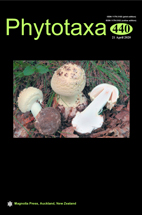Abstract
Stenomitos is a recently established cyanobacterial genus, some species of which appear to be cryptic. Here we describe two new species in this genus, Stenomitos kolaensis sp. nov. isolated from the Al-Fe humic podzols of a boreal forest near Nikel town, Murmansk region, Russia and S. hiloensis sp. nov. isolated from a basaltic seep wall on Akeola Road, Hilo, Hawaii, USA. Phylogenetic analyses were conducted on the 16S and 16S-23S ITS rRNA gene regions using Bayesian Inference, and Maximum Likelihood. Phylogenetic analysis of the 16S-23S ITS rRNA region resulted in both S. kolaensis and S. hiloensis forming separate clades from other Stenomitos lineages. Antarctic strains of Stenomitos frigidus (previously reported as “Leptolyngbya frigida”) show that species to be polyphyletic and in need of revision. The structure of the conserved ITS regions (Box-B, D1-D1ʹ, V2 and V3 helices) provided support for separation of the species, and the p-distances among aligned ITS regions further confirmed that a number of species exist within the genus. S. kolaensis and S. hiloensis can be distinguished from other described Stenomitos species (S. rutilans and S. tremulus) by their geographical distribution, habitat preference, 16S rRNA phylogeny, and differences in the secondary structure of the 16S-23S ITS region.

